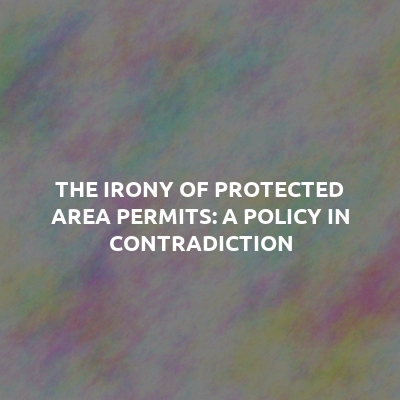The reimposition of the Protected Area Permit (PAP) in Manipur, Mizoram, and Nagaland by the Ministry of Home Affairs comes across as a well-intentioned but a flawed measure. Designed ostensibly to address heightened security concerns due to an influx of individuals from neighboring countries, this policy inadvertently exposes the contradictions in how India addresses immigration, both legal and illegal.
Under the Foreigners (Protected Areas) Order, 1958, foreign nationals are required to obtain PAPs to access designated areas, a rule that was relaxed in 2011 to boost tourism in the Northeast. The re-imposition of this regulation now restricts legal entry while offering little to address the root causes of the current turmoil in Manipur, which is tied to unchecked illegal immigration from Myanmar. This dissonance—where legal visitors are subjected to hurdles while illegal entrants slip through—reveals a failure of governance and border management.
The irony of the PAP lies in its selective application. Genuine foreign visitors, seeking to engage with the rich culture and heritage of the Northeast, are now subject to restrictive bureaucracy. Yet, the porous borders with Myanmar have allowed a significant influx of undocumented individuals. This unchecked migration has not only strained resources but has also contributed to communal tensions and violence, particularly in Manipur.
The ongoing conflict in Manipur cannot be divorced from the demographic changes brought about by illegal immigration. Reports of clashes between local communities and those perceived as outsiders point to the mistrust and resentment brewing in the region. By focusing on restricting legal visitors rather than addressing the broader issue of border security, the government’s actions appear misdirected and insufficient.
At the heart of this issue lies a failure in border management. India shares a 1,643-kilometer-long border with Myanmar, much of which is porous and inadequately patrolled. While the re-imposition of PAP may serve as a gesture of control, it does little to address the actual problem of illegal immigration. Without robust border infrastructure and effective coordination with neighboring countries, such measures will remain superficial.
Furthermore, the lack of a coherent policy to integrate and address the needs of refugees fleeing conflict in Myanmar complicates the situation. While India has a right to protect its sovereignty, it also has a moral obligation to provide humanitarian aid to those in genuine need. The absence of a clear framework has led to ad-hoc decisions that exacerbate tensions on the ground.
The re-imposition of the PAP, while ostensibly aimed at improving security, appears to be a reactionary measure that does little to address the underlying issues in the Northeast. By placing hurdles for legal visitors while allowing unchecked illegal immigration, the government’s approach risks exacerbating the very tensions it seeks to resolve. For peace and harmony to prevail, the focus must shift from symbolic gestures to substantive action that addresses the root causes of conflict and builds trust among all stakeholders. The people of Manipur and the Northeast deserve more than temporary fixes; they deserve a comprehensive and compassionate approach to governance.
The Irony of Protected Area Permits: A Policy in Contradiction
417



